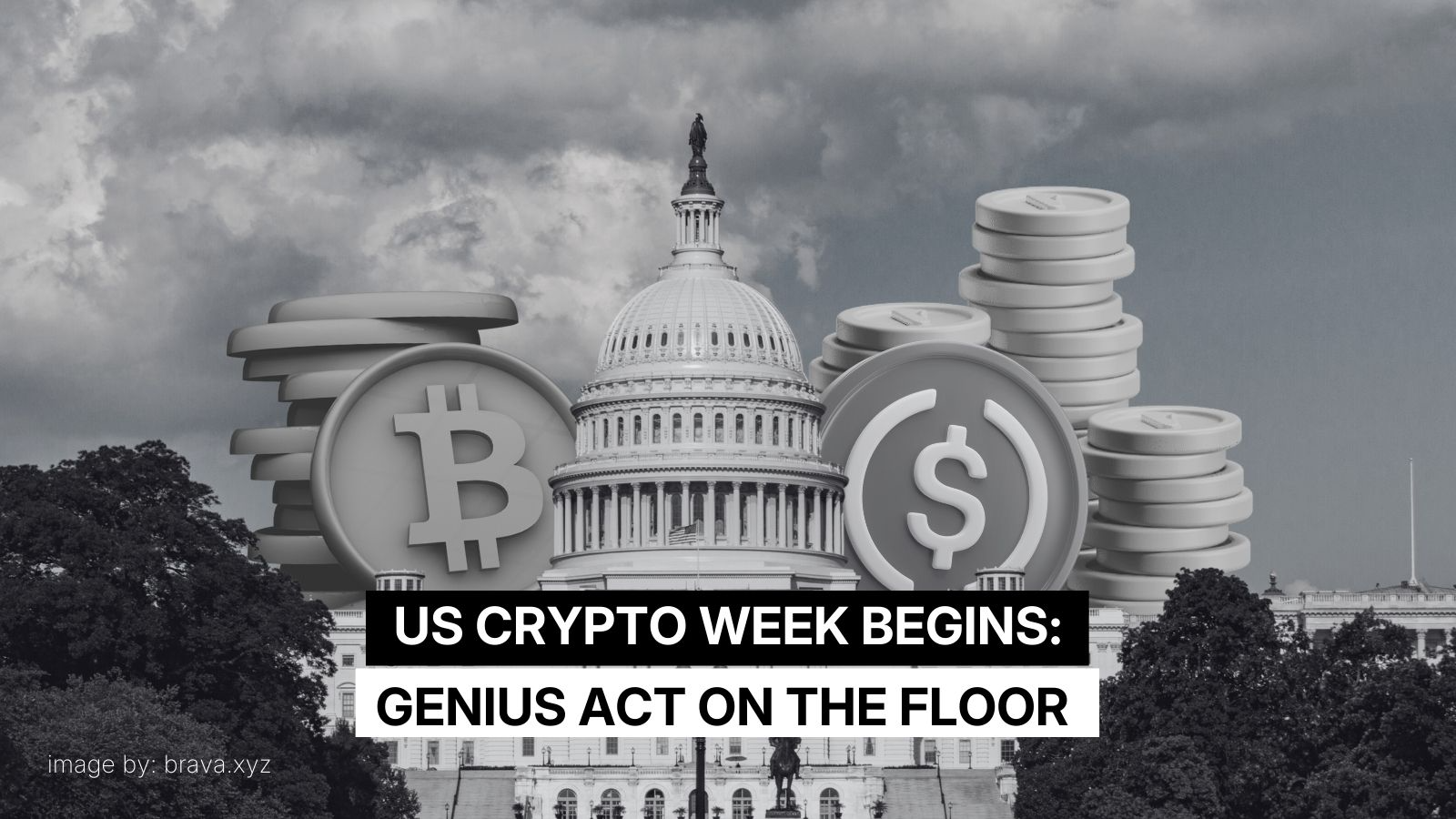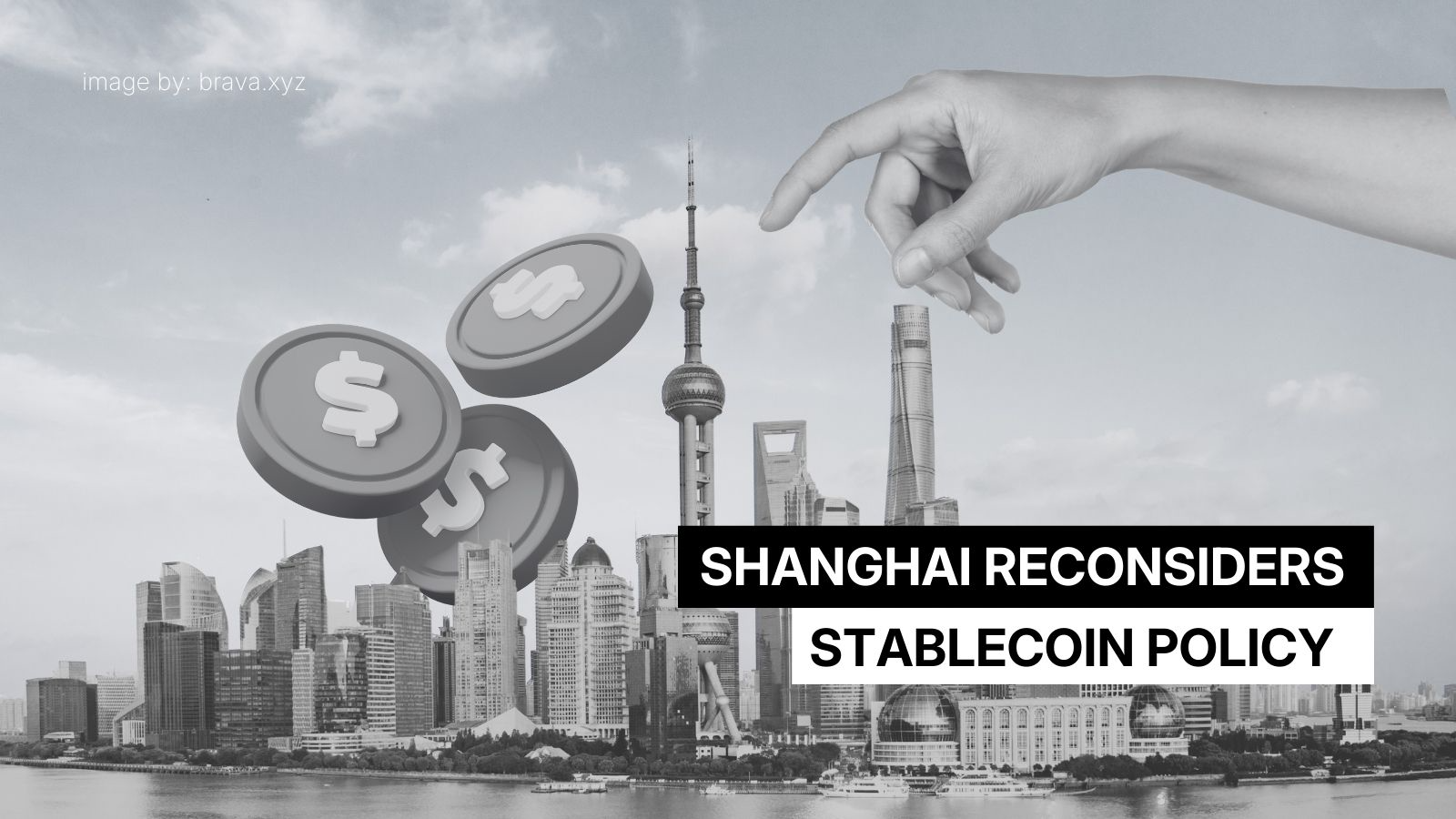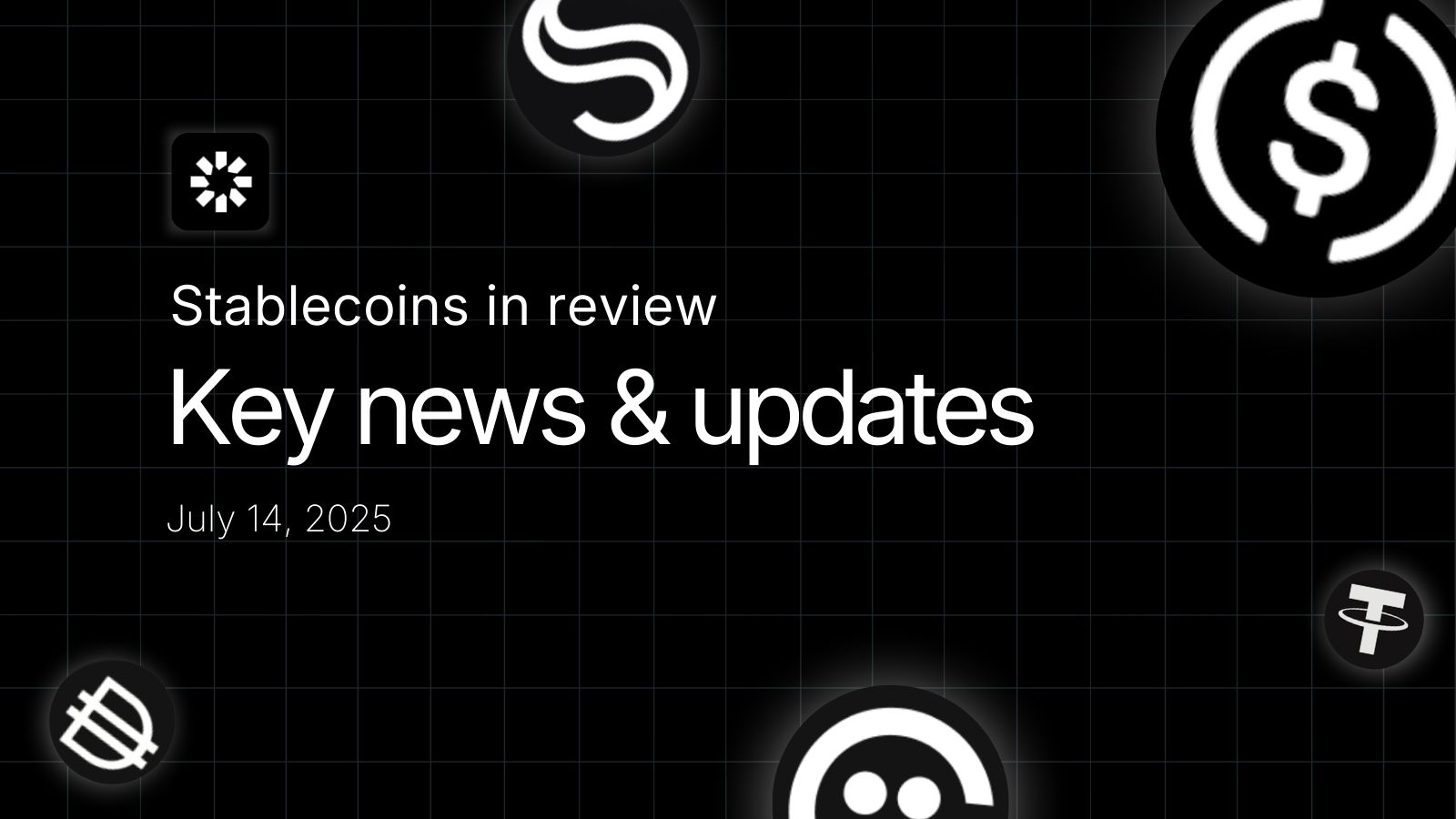This Week’s Headlines:
- US Congress kicks off “Crypto Week” with votes on three major blockchain bills
- New legislation could reshape stablecoin and CBDC policy nationwide
- Shanghai reconsiders stablecoin policy in a rare pivot
- USDT supply hits $160 billion; total stablecoin market swells in just 7 days

Congress Opens “Crypto Week” With Votes on Major Blockchain Bills
US lawmakers have officially launched “Crypto Week,” a pivotal moment for digital asset legislation. At the center are three key proposals: the GENIUS Act (focused on stablecoin regulation), the Digital Asset Market Structure Bill (clarifying SEC and CFTC jurisdiction), and the Anti-CBDC Surveillance State Act (preventing a Federal Reserve–issued retail CBDC). If passed, these bills would mark the first comprehensive federal approach to stablecoin oversight, digital asset market clarity, and civil liberty protections related to digital currency use.
The GENIUS Act, in particular, has broad bipartisan support and would require stablecoins to be fully backed by high-quality reserves, introduce licensing frameworks, and enforce redemption rights. Its advancement signals serious momentum toward building a secure, regulated stablecoin management system in the US which would be a turning point for digital asset policy and stablecoin treasury management.
Crypto Week Preview: Stablecoins, Clarity, and CBDC Debate in Focus
As the week begins, lawmakers and analysts are previewing the stakes of “Crypto Week.” The stablecoin-focused GENIUS Act could reshape how private digital dollars operate in the US, introducing standards for reserve backing, redemption timing, and issuer compliance. Meanwhile, the Market Structure Bill would delineate which tokens fall under the SEC (securities) or CFTC (commodities), addressing long-standing regulatory ambiguity. Lastly, the Anti-CBDC Act has reignited public debate on whether the US should issue a retail digital dollar, and if doing so could threaten financial privacy.
Together, these bills reflect increasing urgency from lawmakers to provide legal clarity without stifling innovation. For digital asset managers and allocators, the implications are significant, especially for firms building around stablecoin treasury management and seeking compliance-grade systems.

Shanghai Regulator Considers Stablecoin Policy Pivot
In a surprising move, the Shanghai Municipal Financial Regulatory Bureau has held exploratory meetings to assess policy responses to stablecoins. This includes evaluating a yuan-pegged stablecoin, an unprecedented shift from China’s longstanding anti-crypto stance. The regulator is reportedly engaging major Chinese fintech players, including Ant Group and JD.com, as part of early discussions on potential licensing and pilot zones, possibly aligning with Hong Kong’s August launch of its stablecoin regime.
While national restrictions on crypto remain, this shift could signal Beijing's interest in competing with US-pegged stablecoins by introducing sovereign alternatives. Such a move could have long-term implications for cross-border settlements and stablecoin diversification, especially across Asia-Pacific markets.
USDT Hits $160 Billion as Stablecoins Swell by $8 Billion in a Week
In just seven days, the global stablecoin market grew by over $8 billion, bringing the total supply to roughly $257 billion, with Tether’s USDT alone surpassing the $160 billion mark. The sharp inflow suggests accelerating demand for dollar-pegged liquidity across trading desks, DeFi protocols, and institutional portfolios. Much of this growth appears to be linked to broader market optimism and anticipation of clearer regulatory frameworks in the US.
The scale and speed of this expansion underscore the strategic importance of effective stablecoin yield management and risk controls. For capital allocators, the question isn’t just which stablecoins to use, but how to monitor collateral, liquidity, and protocol exposure in real time.
—
This Weekly Summary is prepared by brava.xyz.
About Brava:
Brava is a high-yield cash allocation platform that gives professional investors access to blockchain-based stablecoin credit markets. By routing capital into hundreds of secure, collateralised lending pools, Brava delivers automated, transparent, and risk-adjusted yield while users retain full control of their assets through non-custodial smart vaults. Built for capital allocators, Brava combines institutional-grade infrastructure with next-generation financial access.
Disclaimer: Brava does not provide financial advice or guarantee investment performance. Users should assess their own financial circumstances and risk tolerance before using the platform. Brava operates in compliance with applicable regulations and does not manage or hold client funds. Users remain in control of their assets at all times.
Citations:
https://www.globalgovernmentfintech.com/crypto-week-usa-clarity-genius-anti-cbdc-acts/
https://www.coindesk.com/policy/2025/07/11/state-of-crypto-previewing-congress-crypto-week
https://news.bitcoin.com/usdt-hits-160b-stablecoins-swell-to-257b-in-just-7-days/
